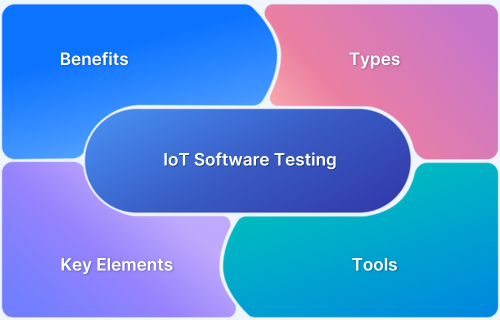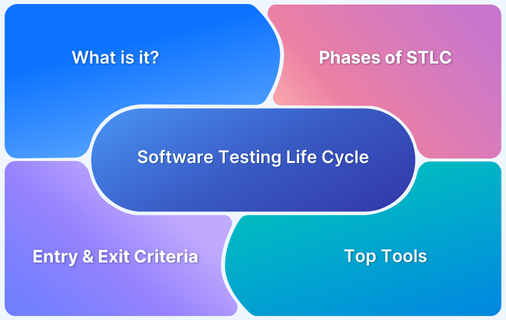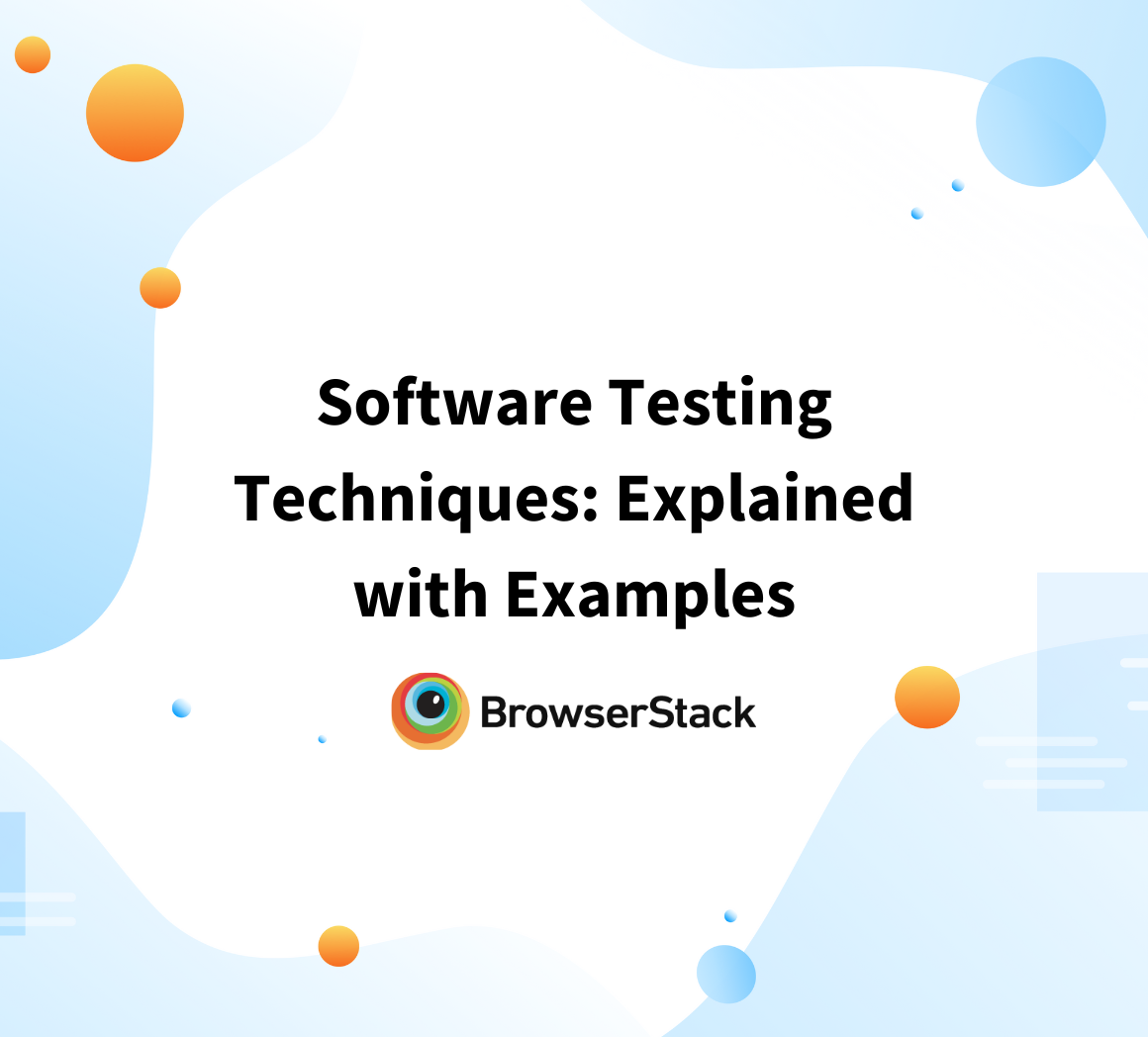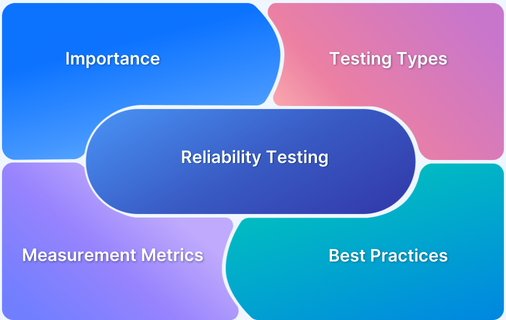The Internet of Things (IoT) connects devices, sensors, and software to enable seamless data exchange and automation. Rigorous software testing is essential to validate the performance, security, and interoperability of these systems.
Overview
What is Internet of Things software testing?
IoT software testing evaluates interconnected devices’ functionality, security, and performance. It ensures they communicate effectively and operate as expected in real-world conditions.
Key Elements to Test in an IoT Application
- Wireless communication: Validate connectivity, latency, and reliability across networks
- Sensor and actuator: Ensure accurate data collection and response mechanisms
- Cloud and edge computing: Test data processing, storage, and synchronization
- Machine learning and AI: Assess predictive accuracy and decision-making capabilities
- Application layer: Verify user interface, APIs, and overall software performance
Challenges in IoT Software Testing
- Device Heterogeneity: Multiple hardware and OS variations complicate testing
- Network Complexity: Connectivity issues affect real-time data exchange
- Interoperability: Devices from different vendors must work seamlessly together
- Resource Limitations: Limited memory, power, and processing impact performance
This article covers the basics of the Internet of Things software testing, including its importance, key elements to test, and types of IoT testing. It also discusses the advanced challenges in IoT testing, best practices, and strategies to ensure reliable and secure IoT solutions.
What is IoT Testing?
IoT testing is the process of evaluating the functionality, performance, security, and reliability of interconnected IoT devices, networks, and applications. It ensures that IoT systems operate as intended, effectively communicate across components, and maintain data integrity and security.
Internet of Things software testing validates seamless device interactions, verifies real-time data transmission, and identifies potential vulnerabilities, ensuring a stable and secure user experience.
Why is Software Testing in IoT Important?
Software testing is essential in IoT to detect defects early, ensure compatibility across diverse hardware and software ecosystems, and optimize system efficiency for real-world conditions.
- Reliability: IoT devices operate in critical environments where failures can have serious consequences. For instance, a malfunctioning wearable in healthcare could misreport vital signs, leading to severe outcomes. Rigorous testing ensures devices function reliably under various conditions, minimizing downtime and failures.
- Security: IoT devices are frequent targets for cyber threats due to connectivity and weak security protocols. Testing uncovers vulnerabilities, such as weaknesses in connected doorbells that attackers could exploit.
- User Experience: IoT devices must be easy to use, responsive, and efficient. Identifying and fixing issues like confusing interfaces or slow response times before release improves the overall user experience.
- Regulatory Compliance: IoT applications, especially in healthcare domains, banking domains, and automotive sectors, must meet strict regulatory standards. Testing verifies compliance with industry requirements to avoid legal risks and ensure device reliability.
Industries that use IOT Automation Testing
IoT Automation Testing is an important component for different industries that focus on enhancing the performance, reliability, and security of connected devices.
- Healthcare: Ensures accuracy in medical devices, wearables, and remote monitoring systems.
- Automotive: Tests connected vehicles, ADAS (Advanced Driver Assistance Systems), and infotainment systems.
- Manufacturing: Validates smart factories, predictive maintenance, and industrial IoT (IIoT) systems.
- Smart Homes: Ensures security, performance, and interoperability of smart locks, thermostats, and appliances.
- Retail: Tests automated inventory management, smart checkout systems, and personalized shopping experiences in both physical stores and e-commerce platforms.
- Agriculture: Optimizes precision farming, automated irrigation, and sensor-based monitoring.
- Energy & Utilities: Ensures reliability in smart grids, smart meters, and energy management systems.
- Logistics & Transportation: Tests real-time tracking, fleet management, and automated supply chain systems.
Examples of IoT Software Testing
Here are five different IoT software testing examples, each representing scenarios where testing is critical:
- Smart Thermostats: Testing verifies that smart thermostats, such as Nest, correctly report the room’s temperature and adjust the heating or cooling activity based on these observations. The functional test basically ensures that the device properly responds to input coming through a mobile app or voice-based system.
- Smart Light Bulbs: Test whether a smart light bulb works well with different smart home systems and their overall performance. It must do everything an app can control, especially as it receives voice commands from virtual assistants.
- Wearable Health Devices: Testing wearables, such as fitness bands, involves checking their performance in monitoring exact health metrics such as heart rate and activity levels. Security testing is also important to safeguard sensitive health data against access by unauthorized persons.
Read More: Exploring Healthcare Software Testing
- Smart Security Cameras: Testing for smart security cameras involves functionality test areas like video streaming quality, motion detection accuracy, and how they integrate into mobile apps. A performance test analyzes the camera to see if it can simultaneously play multiple streams without delay.
- Connected Agriculture Sensors: IoT sensors monitor various soil moisture and weather conditions in agriculture. Testing would ensure accurate readings from these sensors and that they talk well with the central systems for making real-time decisions. These SDLC phases involve unit testing for sensor components, integration testing for data flow, and system testing for functionality.
Read More: Introduction to SDLC Phases and SDLC Models
Key Elements to Test in an IoT Solution
Several key factors must be considered when testing an IoT solution to ensure functionality, performance, and security. Below is a breakdown of these components:
1. Wireless Communication
IoT devices rely on wireless technologies to communicate, which makes it an important part of testing. Key technologies include:
- RFID (Radio-frequency Identification): Used for automatic object identification and tracking of objects. Here, testing would check the effectiveness of the communication in various environments and ensure data integrity during communication.
- NFC (Near Field Communication): IoT devices use it for secure, short-range communication. The testing focuses on data exchange speed and reliability while considering security measures against unauthorized access.
- LPWAN (Low Power Wide Area Network): Supports long-range communication with minimal power consumption. Testing ensures it functions well under various environmental conditions and has the capacity to support a large number of devices.
2. Sensor and Actuator
Sensors collect data from the surroundings, while actuators perform actions based on that data. Testing should include:
- Sensor Functionality: Ensuring that the sensors can accurately read the data (temperature, humidity, etc.) and that equipment responds to commands accurately.
- Integration Testing: Ensuring seamless interaction between sensors, actuators, and IoT systems.
3. Cloud and Edge Computing
Cloud computing handles large-scale data storage and analytics, while edge computing processes data closer to the source for faster response times. Testing should focus on:
- Data Processing: Data processing must be efficient at both the edge and in the cloud to minimize latency and bandwidth usage in the processing pipeline.
- Scalability: Verifying that the system can handle increasing data loads and device connections without performance degradation.
4. Machine Learning and AI
Machine learning and artificial intelligence enhance efficiency, optimize processes, and ensure more intelligent automation within IoT ecosystems.
- Algorithm Performance: Evaluating the accuracy and response time of machine learning models deployed on IoT devices.
- Data Privacy and Security: Ensuring AI algorithms comply with data protection regulations and securely handle sensitive data.
5. Application Layer
The application layer is where users interact with the IoT system. Testing should encompass:
- User Interface (UI) Testing: Ensuring that the application is user-friendly and that all features function as intended.
- Security Testing: Verifying that the application is secure against threats, including unauthorized access and data breaches.
Types of testing in IoT
Here’s a brief explanation of each type of testing in the context of IoT:
1. Functional testing
Functional testing evaluates the operational aspects of IoT devices to ensure they meet specified requirements. It involves,
- Unit Testing: Each module or component of an IoT application is tested to ensure it functions correctly in isolation. Due to its technical nature, this task is typically carried out by developers rather than testers.
- Integration Testing: This involves verifying the connectivity and communication between various IoT devices and systems, ensuring that they work cohesively in a real-world environment.
2. Performance testing
Performance testing evaluates how IoT applications function under expected real-world conditions. It typically includes:
- Load Tolerance: The extent to which the system can operate when many people or data streams make queries simultaneously.
- Response Times and Throughputs: Data transmission speed and efficiency are monitored to optimize user experiences. The goal is to ascertain bottlenecks and ensure devices can cope with real-world operational demands without degrading performance.
3. Security testing
Security testing ensures an IoT ecosystem remains free of vulnerabilities and security gaps.
- End-to-End Testing: This last test ensures that all data flows from sensors to actuators and is uniquely secured within the full scope of its components.
- Penetration Testing and Vulnerability Scanning: These include routine assessments of system security weaknesses that can potentially be exploited by malicious parties.
4. Compatibility testing
Compatibility testing determines whether an IoT device can work seamlessly in different platforms, operating systems, and browsers. This establishes effective communication strokes between devices and different hardware and software environments while detecting all discrepancies in user experience or functionalities.
Read More: How to perform Mobile Compatibility Testing
5. Connectivity testing
Connectivity testing evaluates the strength and reliability of communication between IoT devices, applications, and networks. It verifies whether the IoTs can access the network and work efficiently to transfer data without problems considering different network conditions.
6. Interoperability testing
Interoperability testing ensures compatibility and communication between different devices in an IoT environment. It is essential in ecosystems like smart homes, where devices from multiple manufacturers must work together seamlessly.
7. Usability testing
Usability testing actually emphasizes the user experience interaction with the system for IoT solutions. It mostly addresses how intuitive the interface is, the ease of configuring a device, and overall user satisfaction with the system.
8. Reliability testing
Reliability Testing measures how stable and robust an IoT system will be for a long time. This testing identifies potential failures to ensure the system consistently performs its intended function, maintaining user trust and system integrity.
9. Compliance testing
Compliance testing ensures IoT devices meet relevant legal regulations and requirements. Devices must conform to safety, performance, and interoperability standards set by regulatory bodies to ensure market acceptance and user safety.
Read More: 508 Compliance Testing Tools
10. Data integrity testing
Data integrity testing verifies the accuracy and consistency of data collected and transmitted by IoT devices. It detects corruption, loss, or alteration to maintain data reliability for decision-making.
11. Network testing
Network testing evaluates the performance and reliability of the network infrastructure supporting IoT devices. It measures key metrics such as bandwidth, latency, and throughput to ensure the network meets IoT requirements and supports seamless connectivity.
How to perform IoT Software Testing?
Here’s a step-by-step guide to conducting IoT software testing effectively.
Step 1: Requirement Analysis for IoT Testing
The first step in creating any IoT testing strategy is analyzing the current state of the product and client requirements. This involves evaluating whether the product adheres to requirements and whether those requirements align with market needs.
During this phase, teams should identify essential features like Over-The-Air updates and industry standards compliance. The analysis should cover all layers of the IoT ecosystem: device layer, connectivity layer, data processing layer, and application layer.
Step 2: Identifying IoT Testing Types
With so many types of IoT testing, it is essential to choose the right ones for your device.
- Functional Testing: Required when validating core functionalities to ensure the device, application, and interfaces operate as expected
- Performance Testing: Needed if the device processes large amounts of data or operates in unpredictable conditions
- Security Testing: Critical for any IoT device handling sensitive data or operating in regulated industries
- Compatibility Testing: Necessary for IoT products designed for multiple ecosystems to ensure they function across different platforms, devices, and operating systems
- Usability Testing: Important for consumer-facing IoT products but less critical for backend systems
- Scalability Testing: Necessary for devices expected to support a growing user base or large-scale deployments
Step 3: Setup Test Environment
Creating an appropriate test environment requires both hardware and software components. This includes:
- Setting up physical devices and sensors
- Configuring network infrastructure
- Installing necessary testing tools
- Establishing monitoring systems
- Creating simulation environments where needed
Step 4: Design and Document Test Cases
Test cases should be comprehensive and clearly documented. Each test case needs:
- Clear objectives and prerequisites
- Detailed test steps
- Expected results
- Pass/fail criteria
- Environmental requirements
Documentation should cover both normal operation scenarios and edge cases, ensuring thorough coverage of all possible use cases.
Follow-Up Read: Understanding Testing Documentation
Step 5: Execute tests
Test execution follows a structured approach:
- Verify environment readiness and prepare test data
- Perform tests according to documented procedures
- Document results and any deviations
- Track and report issues
- Maintain detailed test logs for analysis
Step 6: Continuous Monitoring and Maintenance Testing
IoT testing is an ongoing process requiring continuous monitoring and maintenance:
- Regular performance monitoring
- Security update verification
- Compatibility checks with new devices/platforms
- Regression testing after updates
- Analysis of usage patterns and system metrics
Testing must evolve to meet new challenges and demands, and the strategy must be frequently reviewed to guarantee continuous quality and reliability. This continuous improvement process keeps the IoT solution effective and secure in the long term.
Best IoT Software Testing Tools
Here’s a summary of some of the best IoT software testing tools available, including their key features and benefits.
1. BrowserStack

BrowserStack is a cloud-based testing platform that allows developers to test their web applications and mobile apps across a wide range of real devices and browsers. It supports automated and manual testing, making it versatile for various testing needs.
Key Features:
- Access to over 3,500+ real desktop and mobile browser combinations
- Automated testing capabilities using Selenium and Appium
- Real device testing for IoT mobile apps and web interfaces
- Live testing with real-time debugging tools
Benefits:
- Real Device Cloud: BrowserStack offers a large variety of real devices for testing in actual user environments, which is crucial for IoT applications to receive an unbiased measurement of performance and functionality.
- Improved Testing Precision: Testing on actual devices, rather than emulators, allows QA teams to identify the most subtle device flaws in IoT testing that might otherwise go unnoticed in simulated tests.
- Collaboration Capabilities: It seamlessly integrates with CI/CD pipelines, which promotes collaboration between development, QA, and operations teams. This helps team members collaborate effectively to detect and resolve issues as early as possible in the development workflow.
- Support for Varying Testing Scenarios: BrowserStack supports geolocation testing and biometric authentication, which can help test security features like location-based access control, fingerprint or facial recognition, and multi-factor authentication.
2. QA Wolf

QA Wolf is an AI-native service that delivers automated end-to-end test coverage for web and mobile applications. It aims to simplify the testing process and improve software quality.
Key Features:
- 80% automated E2E test coverage achieved in just four months
- Human-led testing approach to ensure high-quality results
- Easy integration with existing workflows and tools
Benefits:
- Increased Efficiency: Reduces manual testing time significantly
- Reliable Testing: Ensures high accuracy with low false positives
- Seamless Integration: Works well with CI/CD pipelines for continuous testing
3. Wireshark

Wireshark is a widely used network protocol analyzer that captures and inspects packets transmitted over networks. It is essential for analyzing the network behavior of IoT devices.
Key Features:
- Deep inspection of hundreds of protocols
- Live capture and offline analysis capabilities
- Multi-platform support (Windows, Linux, macOS)
Benefits:
- Network Troubleshooting: Helps identify and resolve network issues affecting IoT devices
- Security Analysis: Monitors network traffic for vulnerabilities and potential threats
- Detailed Reporting: Provides in-depth analysis for better decision-making
4. Appknox

Appknox is a comprehensive mobile app security testing solution that focuses on identifying vulnerabilities in applications, including IoT devices.
Key Features:
- Automated and manual vulnerability scans for thorough coverage
- Dynamic Application Security Testing (DAST) to analyze security at runtime
- Comprehensive penetration testing services
Benefits:
- Enhanced Security: Helps protect IoT applications from potential threats
- Compliance Support: Assists in meeting regulatory requirements
- User Trust: Increases user confidence by ensuring robust security measures
5. Mobot

Mobot is a unique QA-as-a-service platform that uses mechanical robots to automate mobile app testing. It is designed to provide real-world testing scenarios for IoT applications.
Key Features:
- Automated testing on over 200 touch-based devices
- Ability to upload video test cases and provide specific testing instructions
- Detailed reporting and analysis of test results
Benefits:
- 100% Test Coverage: Ensures thorough testing of all application features
- Faster Release Cycles: Accelerates product releases by automating key testing tasks
- Improved User Experience: Catches bugs early to maintain app stability and user satisfaction
IoT Testing Challenges
IoT software testing presents a range of unique challenges that stem from the complexity and interconnectedness of devices within an IoT ecosystem. These challenges can significantly impact the testing process and the overall reliability and security of IoT applications.
1. Scale and Complexity
One of the most important challenges in IoT testing relates to the scale and complexity of the systems involved. The interconnected devices, sensors, and actuators create complex interactions and dependencies, which are usually simulated and require advanced techniques to handle various scenarios and configurations.
2. Interoperability
Interoperability is another major challenge. IoT devices from multiple manufacturers will likely use different communication protocols and standards, making integration difficult. Having numerous protocols and standards supported extensively to enable different devices to communicate in a simulated setting is technically intensive as well as resource-consuming.
3. Dynamic Network Conditions
IoT devices often operate under dynamic networks, such as latency, bandwidth, and packet loss variations. Simulation of the variable conditions must be an integral part of IoT system performance and reliability evaluation. The ability to examine how devices adapt to actual scenarios of the world’s networks will have a high impact on how robust the finished product will be.
4. Security Vulnerabilities
The interlinked structure of IoT devices also offers a large potential for security risks. Each new device and protocol, in addition, increases the number of opportunities for unauthorized access, hence making the whole network weaker in comparison to an attack. This makes security vigilance a continuous task and complicates the testing field, as the vulnerabilities may occur after the initial testing stages.
5. Resource Limitations
Most IoT devices are cost- and resource-constrained, which tends to limit their processing power and memory. Such limitations make adopting complex interoperability protocols and stringent security features difficult, particularly in applications with large-scale deployments like industrial IoT or smart cities.
6. Continuous Testing
The dynamic nature of IoT systems necessitates a proactive approach to testing that keeps pace with technological advancements and user expectations. It should follow a continuous testing process throughout its life cycle to ensure reliability as systems change and new devices are integrated into the IoT mesh.
Follow-Up Read: Continuous Testing Strategy in DevOps
Best Practices for IoT Software Testing
Now that you know the challenges in the Internet of Things software testing, here are some best practices to follow.
1. Testing Early and Often
Testing early and testing often is another imperative attribute of IoT software testing. Find bugs very early in development to minimize cost when they do need to be found and fixed. This practice also involves continuous testing and integration-even on an Agile basis.
Read More: 6 Testing Tactics for Faster Release Cycles
2. Compatibility and Interoperability Testing
Compatibility testing is a foreplay of an IoT ecosystem and is very important because of the multitude of devices and platforms that exist within an IoT ecosystem. The compatibility test checks how well devices and their respective communication protocol can talk to each other. It protects one from risks arising from malfunctioning devices as there may be failure in some application functions.
3. Security Testing
Security is the major aspect of IoT software testing, as these devices usually have security vulnerabilities because they are connected. Firewalls and threat models of threat detection testing should integrate an entire security testing framework to determine possible threats and weaknesses. This includes penetration testing and vulnerability assessments to fortify device defenses against unauthorized access.
Future of IoT Testing
Software testing in IoT is an exciting field and the progress of technological development as well as more complex IoT ecosystems will influence this change. As IoT is set up across different industry sectors, a number of the key trends that an IT tester should be aware of when preparing the IoT testing project, could be as follows.
1. Integration of Artificial Intelligence and Machine Learning
AI and Machine Learning are being integrated into IoT software testing in a way that will likely become one of the biggest trends in that area. These technologies automate the process of test-case and script generation, significantly minimizing manual intervention and allowing the tester to cover more scenarios efficiently.
AI and ML use pattern recognition and anomaly detection to predict failures early based on past data. This helps improve quality assurance and makes testing more effective.
2. Adoption of Generative AI
Generative AI or Gen AI will take IoT testing further by providing realistic datasets and simulating very complex real-world scenarios such that it can overcome the restraints of real-world data. This not only helps to fold in the testing process but also generates a set of diverse test data representative of actual user interactions and environmental factors.
Furthermore, Gen AI permits self-healing tests that would update themselves based on changes in the devices and/or changes in the network involved, thus keeping them up to date with respect to testing without human involvment.
Read More: Top 12 AI Automation Testing Tools
3. Enhancements in Interoperability Testing
Having numerous IoT devices and systems communicating in networks is often complicated. Organizations such as the Institute of Electrical and Electronics Engineers (IEEE) and the Internet Engineering Task Force (IETF) emphasize that developing open standards and frameworks will greatly improve the integration of devices from different manufacturers.
4. Increased Use of Cloud-Based Testing Solutions
Cloud-based testing solutions will increasingly be adopted as they allow for scalability and flexibility in IoT testing processes. These platforms enable conditions to be set up to resemble the real world and create extensive testing opportunities without having to limit it to hardware setups that traditional ones face.
Conclusion
IoT software testing is critical to the reliability, security, and performance of devices. As the Internet of Things environment progresses, the techniques and instruments for testing will have to adapt, and this area will, in turn, be the one in most need of lifelong investments in innovation. The testing process ensures the smooth functioning of IoT applications in the real world by extensively verifying the performance, functionality, and security of the interconnected devices.
However, don’t forget to test your IoT applications on real devices and verify how they work across different hardware and OS configurations. Use BrowserStack to access over 3,500+ real devices, browsers, and OS combinations to ensure compatibility, performance, and security under real-world conditions.
Frequently Asked Questions
1. How much does IoT application testing cost?
The cost of IoT application testing can vary widely based on the complexity of the application and the types of testing required.
2. How do IoT devices handle data synchronization and data consistency?
IoT devices typically use cloud services and edge computing to manage data synchronization and ensure consistency.
3. What is the scope of IoT testing?
The scope includes testing device communication, sensor performance, security, and overall system functionality.





